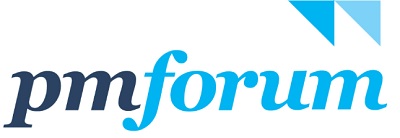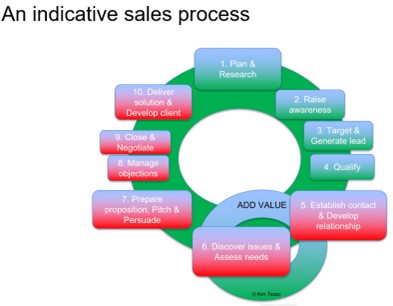
This article “Professional Marketing Forum conference report 2018: The Bare Necessities” was published in Professional Marketing magazine I have written many Professional Marketing Forum Conference reports over the past decade. A list is shown towards the end.
It was a pleasant change to have Lucy Canning, newly appointed to the Board of Grant Thornton UK, as chair in the familiar hall at the TUC Congress Centre. She started with: “Our job is to help partners sell themselves and make clients choose our firms”.
Behavioural bias – Richard Shotton of Manning Gottlieb OMD
As a psychologist, it was great to see behavioural scientist Richard Shotton (author of “The Choice Factory”) take the stage first to show that even professional decision makers take decisions irrationally.
His talk ranged from New York murders (diffusion of responsibility and the bystander effect) to the anchoring effects of the “Diamond is forever” advertising campaign. Delegates had completed a survey before the event and we saw evidence of the overconfidence bias where 90% of people over-estimated their performance. He talked about peak and best moments effects – using popsicles at a Los Angeles hotel to illustrate his point. There were some interesting insights (such as use creativity not cash) to improve the client experience.
Masterclass in real marketing – Heidi Taylor
Heidi, author of “B2B marketing strategy – differentiate, develop and deliver lasting customer engagement”, took the conference title of bare necessities to heart. She talked through a series of leading consumer campaigns and went back to basics with an exploration of the four Ps of marketing.
She dismissed the fallacy that marketing is undergoing radical change by showing that fundamental change has been happening in marketing since the 1960s. She shared a chart of the 6,829 marketing technology solutions now available.
She reminded us that brand is not the same as visual identify and that a plan is not a strategy. She offered the 5Ws and H approach (Why, Who, Where, What, When and How) to support strategy development.
She explored the distinction of a client using services and a customer buying goods – which was interesting when we later heard from some professional services clients who begged to differ. Her view on ROI was that we should: “Measure to make better decisions, not to prove our worth” and that we should move our focus “from outputs to outcomes”.
When the world zigs, zag: be more creative – Tom Roach of BBH London
It was fascinating to hear how a leading advertising agency ensures creativity by always asking “Where’s the difference and what rules can we break?” Tom stressed “The power of difference to make a difference”. The process was beautifully demonstrated with campaigns for Levis (black sheep) and Audi (clowns on the road). He presented startling information on the power of brands – 20% of a business’ value, 13% higher prices and four times the growth.
He argued for the need to simplify, distil and reduce a brand message to a single thought. He talked about the impact of distinctive brand assets on memory and mental availability, but noted that 84% of advertising is wasted. He reminded us that emotional value generates 52% more customer value and that emotional campaigns are twice as likely to achieve top-box profit.
I enjoyed hearing about the development of the Deloitte “Do – action, delivery, impact” campaign but sad to hear that it hit issues when they tried to roll it out globally. He summarised with:
- Find your brand truth
- Get noticed (“Stand out to succeed”)
- Wear recognisable clothes
- Be consistently you
- Tell a story
- Say it with feeling
Morning break-out sessions
Some delegates moved to workshops where the topics included:
- Writing to sell using a modified version of Attention, Interest, Desire, Conviction and Action by Eileen MacCallum
- Budget marketing where the process of: planning, people, partners, process, platforms, proof and professional development formed the basis of Helen Burness of Saltmarsh Marketing’s talk
- Client value propositions where Susanne Pugsley concentrated on the importance of questioning techniques and active listening
- Digital and multichannel strategy with Kent Valentine of Draw Group with a framework of vision, objectives, success, measures, audiences, needs, actions, content and functionality
- Effective brand management which received lots of positive feedback for the Menzies “Brighter thinking” rebrand case study
Convincing the sceptics – Lee Grunnell of Thirteen
I remained in the hall to hear Lee’s overview session. He started with the Dunning–Kruger over-confidence effect mentioned earlier by Richard. Then he went back to basics on brands – echoing some of the sentiments of Tom. He used Coco Chanel’s quote “In order to be irreplaceable, you must be distinctive”. He explored the Nasguard triangle of parity, superiority and distinctiveness.
He summarised the need for a brand to be clear on its essence, purpose and positioning with nods to Schillings lawyers (“Protect the privacy and reputation of the world’s most successful people”) and Mishcon de Reya (“It’s business but it’s personal” – which achieved 100% revenue and profit growth for the firm from 2009 to 2015).
He defined brand as “the sum of anything and everything that creates a perception about who and what you are”. He argued that brand building is about creating a feeling and habits through repeated exposure. His three key messages were: mix reason with emotion, pitch the right language and models and 90% is generic and 10% is distinctive.
Lunch was a lively affair with Indian, Asian and Italian street food options in eco-friendly boxes. I don’t think I was the only one who tried several of the treats on offer.
Genius steals – Brian Macreadie of Bryan Cave Berwin Leighton Paisner
Creative swiping, a term coined originally by Tom Peters, is one of my favourites. And Brian raised the post-lunch energy levels significantly as he talked enthusiastically about creativity. I think this was my favourite session of the day – not least because it was delivered by an in-house professional services marketer. He warned us he was “potty mouthed” and then regaled us with stories about laxatives, haemorrhoids and condoms.
His messages included “show don’t tell” (and we all loved seeing that EDS “herding cats” video again), be brave, dramatise (e.g. Hiscox cybercrime attacks board at Canary Wharf) and create an emotional connection,
He also shared some of his favourite PSF campaigns including Nabarro’s “Sweet tooth for UK property”, and his own firm’s Ocean’s 11 banking regulatory risk video (generating 1200% ROI, 29 clients and £100,000 new fees), Busy Lawyer 9 action movie posters and events with a haunting theme about legal ghosts.
Performing at the peak – Meirion Jones
As others dispersed to the afternoon breakout sessions, I listened to Meirion talk about personal development and self-awareness. He too touched on biases, filters and perception, internal storytelling and emotional hijacking and urged us to challenge the status quo.
Continuing the themes from earlier in the day he described victimisation and spotlight biases. He said that while we receive 4 million bits of data every second we only notice about 40 of them. There was a useful framework for effective meetings (objectives, preparation, mind set, facilitation and outcome). He talked about the Trigger, Impulse and Awareness cycle and advised we had 20 seconds to dissipate emotions. I particularly liked his quote by Viktor Frankl “When we are no longer able to change the situation we are challenged to change ourselves”.
Client panel – Crown Estate, Surrey County Cricket and JUUL
Rob Booth, General Council for The Crown Estate, Elaine Hutton, GC for JUUL Lab (e-cigarettes) and Andrew Lane, the Finance Director for Surrey County Cricket Club were the client panel members interviewed by Lee Grunnell.
Views were refreshingly different. Rob would prefer to be called a customer rather than a client. He urged firms to think about and demonstrate their purpose. Elaine wants advisers who have emotional intelligence and are honest and kind and with whom she can become friends. She also wants things done well – so no cheap wine. Andrew repeatedly asked for advisers to read the brief, listen carefully and stress specific areas of expertise. Interestingly, none of them used procurement for selecting professional services.
Over-riding themes
Reflecting on all the excellent talks and workshops, it became apparent that we need to go back to basics whether that’s understanding human behaviour better (neuroscience ideas were mentioned in several talks), remembering the need for solid marketing process and planning, the simplicity in creating strong brands or channelling creativity. Several presenters referred to the need to have a vision that acts as a North star to guide each and every action at every moment,
It was good to have so many speakers from beyond the confines of professional services as it helps us see the challenge of professional services marketing that much more clearly.
Previous Professional Marketing Conference reports:
http://kimtasso.com/professional-marketing-conference-2017-highlights/
http://kimtasso.com/importance-client-experience-management-cem-pm-forum-conference-report-2016/
http://kimtasso.com/futurologist-chris-yapp-on-the-professional-firms-of-2020/ (2015)
http://kimtasso.com/the-future-agenda-for-marketing-in-the-professions/ (2013)







